Nikon D4s and Nikkor 800mm f/5.6 for Bird Photography
My D7000, Nikkor 500mm and I have had some wonderful times together – the shots of a Peregrine chick jumping off the ledge for the first time, the yoga-stretching Osprey that made Audubon’s Top 100, and who can forget the Night Heron flying past with a baby alligator in it’s mouth. But like all relationships, it seemed the initial pizazz was fading. I began to notice how she had trouble staying focused and got noisy when I pushed an issue. Furthermore, with 190,000 clicks under her belt, well, let’s just say her shutter curtains were starting to droop a bit. It was time to move on, but don’t get me wrong, we’ll always be friends. Now I hate to admit it, but I’d been having an online affair with the new Nikkor 800mm for almost a year – I’d link over to her B&H page and run my finger gently around her buy now button. Oh how we teased each other… Then one day we went all the way.
Next week she was there in front of me, the ten pound, one ounce Nikkor 800mm f/5.6E FL ED VR OMG BFF. However, when I unpacked my new lens, it was obviously lacking a proper rear lens cap. How inconsiderate of Nikon not to include a D4s to keep the rear element clean. Nothing a few years of crippling debt couldn’t solve. I dusted off my backup credit card and a few days later the D4$ showed up. So without further ado, my first 29 hours testing the 800mm/D4$ combo for reach, handholding, buffer, burst rate, high ISO ability and general BIFiness.
Reaching Out
Let’s start at the end of the day and half of testing – 800mm of reach allowed me to maintain a non-threatening distance from this Common Black-hawk posing in front of the moon sneaking through the clouds. 1/1250, f/6.3, ISO 2500, 800mm, D4s. I cut loose with some artistic experimentation with this – embrace the post-processing noise – it’s pretty much the last you’ll see in the article:
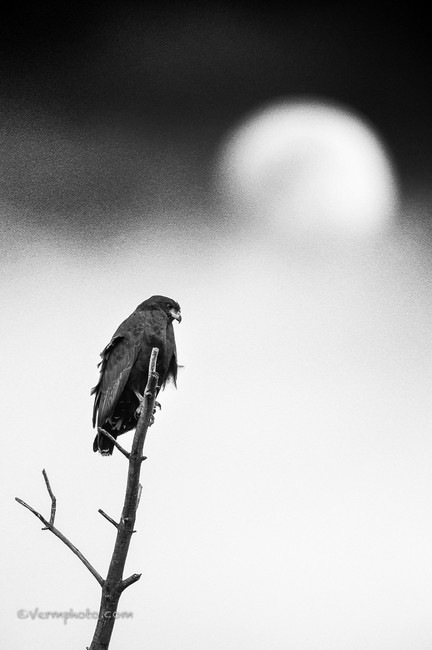
Please note: the shots in this article were all shot in camera as large fine JPEGs. I usually shoot RAW, but Lightroom doesn’t have D4s RAW support yet so I went the jpeg route for now.
The Anderson Handheld Challenge
Let’s go back to the beginning. The D4s/800 test started inauspiciously as I spotted a Red-tailed Hawk on a power pole and drove a bit closer. I was curious about hand-holding this beast so I left the tripod in the van, grabbed the camera, turned around and the hawk was gone. For those not experienced in bird photography, this is the norm – for every bird sighted, only very few allow themselves to be photographed. I figured I’d spooked the bird but that was not the case – the hawk was racing over to engage a Bald Eagle that was trying to steal a rodent clutched in the talons of yet another Red-tail. Crazy action right off the bat. I lurched around the corner of my van, swung the D4/800 combo up and started ripping away. Problem is, it’s darn hard to center your target through such a narrow field of view as the following shot shows. This is cropped and aligned from the bottom left quarter of the frame:
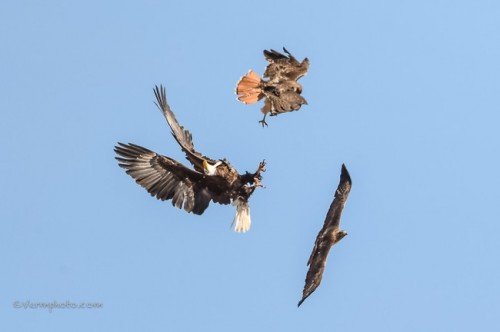
Verdict: This sub-par result is all my fault not the D4s/800. You can successfully hand-hold this beast at very high shutter speeds (I’d stay at or above 1/2000th), but it’s hard to find your target and track it. This isn’t the lens’s fault, just the nature of super-telephoto photography. If you can find your subject and lay an AF point on it, you should get acceptable results. Note: the rest of the photos in this article were shot on a tripod with sidemount gimbal head.
Easy Bird in Flight Test
I was pretty bummed about blowing that shot – after-all, Bald Eagles and Red-tails are generally easy subjects – they usually fly slowly in predictable paths and are large birds easy to nail a focus point on. Dagnabbut – I needed an even easier BIF subject to test this out on. Nearby was an area next to a fish hatchery that attracts Great Blue Herons and Osprey.
Great Blue Herons are a gateway bird. An easy high that hooks many shooters on bird photography and leads them to harder stuff like falcons, pro DSLR bodies and 10K lenses. GBHs are huge and fly in slow direct paths. The can be skittish, but if busy feeding or just lazy, will allow a close approach:
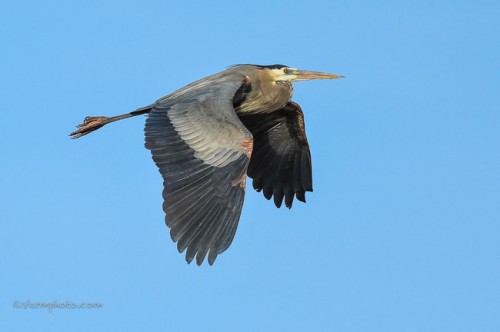
Verdict: I tossed the D4s/800 a softball and it knocked it out of the park as it should.
A Buffer Buffer?
Heron in the bag, cue the Osprey. Osprey are less skittish than Herons, but a bit smaller. They’re noble, dashing, powerful birds and cooperative subjects. They will circle a pond looking for fish, hover facing into the wind when they spot one (good time to lock focus), then dive and usually come up with a meal. They conveniently stay submerged for a few seconds wrestling with the fish while you reacquire focus, then lift back out of the water in a glorious spray and fly to their favorite perch (right past you if you have their routine scouted). What an embarrassment for this osprey diving twice for fish and coming up empty – in a hatchery pond no less. Poor gal could starve at Long John Silvers. Anyway, it gave me a chance to check out the D4s’s vaunted buffer while this Osprey circled the pond. Yeah, I actually buffered it out, but I had to try.
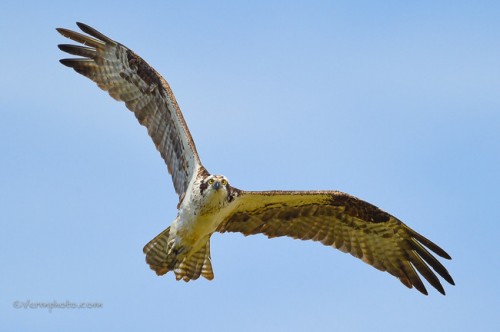
Verdict: thumbs up on the buffer, 5 stars, will you marry me?
11 Frames Per Second? Be Still My Heart.
One thing that struck me immediately was the frame rate increase – after just one day shooting birds with the D4s, I tried out the D7000 for a sequence and thought I’d inadvertently set it to CL mode. I had always thought that 6 fps was sufficient for bird shots, but the following shot proved me wrong:
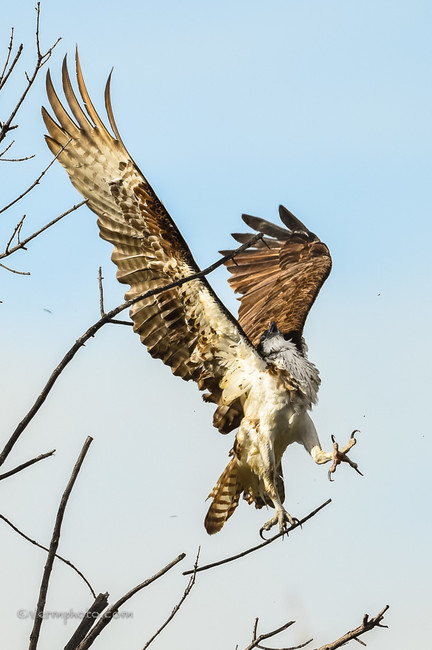
Verdict: Take away my 11 fps and I’ll have to hurt you.
Getting High on ISOs
What about high ISO? For sharp bird photos you want to shoot quick shutter speeds – even 1/1000 sec will show blur in most flight photos or even preening shots when the bird twitches. Problem is, birds are most active around dawn and dusk when there is less light. If you’re going for crisp action shots (as opposed to intentional motion blur), you need fast shutter speeds and that means bumping up the ISO and therefore the noise. I spun the command dial and bumped the ISO up to 10000 with the following results:
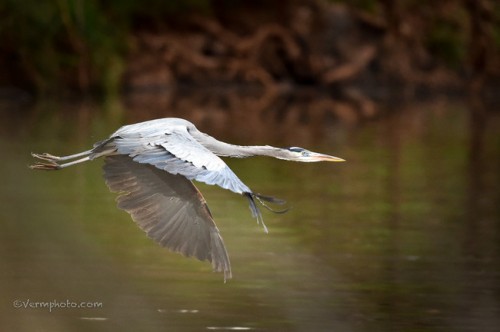
With super-telephoto lenses, depth of field is shallow at best. Unless you’re shooting condors or ostriches, birds are generally small to tiny subjects. You need to get close and the closer you get the less your DoF. With a 800mm lens on a full frame body and a bird 50 feet away, you get only 4 inches of DOF when wide open at f/5.6. Fine for a warbler – but at that distance the warbler will be mighty small in the frame. Crop in and IQ will suffer. At 50 feet away, you have to stop down to f/14 just to get 12 inches of DOF. Focus on the wingtip of a GBH in flight and the body will be soft. Again high ISO capability can make a big difference.
Verdict: I’ll tell you as soon as I wipe away these tears of joy.
Keeping Focused
On to AF performance. You’d be hard pressed to find a better test of AF performance than shooting flying birds in various situations. We’ve already seen GBHs and Osprey in flight, but how about putting the focus system and photographer really to the test and choosing a challenging subject. Anyone say Violet-Green Swallows? These guys are the size of a stick of butter and twice as slippery. They’re insanely fast and erratic fliers that make multiple course corrections in flight to catch bugs in midair or pluck them off the water surface. Tracking them is like trying to follow an air hockey puck. I shot 856 frames of these guys and probably half didn’t even have a bird in the frame. I only kept 37 frames, and only six of those true keepers, the other 31 saved for research into swallow attack angles and other behavior that could help my shooting in the future.
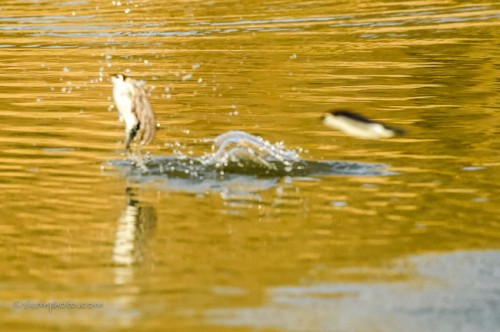
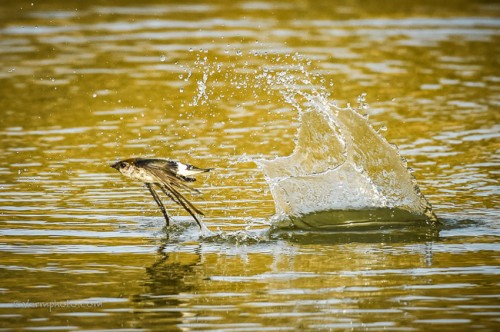
Verdict: Don’t expect AF miracles from the D4s. It’s early in my testing, but other than f/8 AF capability, I don’t see a great improvement in the field over what my D7000 does. All the same AF frustrations I experience with my prosumer bodies and bird photography still apply. I think the D4s tracks subjects flying behind foliage better, but this might be a function of how OOF the plants are with the 800mm’s very shallow depth of field. I played a bit with the new group mode, but so far I’m not a groupie. Note: 3D tracking and Auto AF modes don’t work with the 1.25x teleconverter on – only at f/5.6 or less.
Sniff
The D4s doesn’t allow one to save user settings in camera like the D7000 or D600. For instance, I generally shoot in manual mode and if a bird is perched, I can get by with a lower shutter speed and lower my ISO for better IQ. With my D7000, if my subject takes to the air, U2 has my BIF settings ready to go and is just one click away from M. On the D4s you get M, A, S, P and that’s it. Seems like this would be an easy addition to make in future firmware – I’ve already dropped this idea with my NPS rep and maybe if a bunch of other users do too it could become reality.
Another criticism I have is how shallow the D4s vertical grip is – it doesn’t fit big hands well at all.
Was It Good For Me?
I can give you 25000 reasons why you shouldn’t buy the D4s/800 combo. Or I can show you this pic, shot midway through my first day with the D4s/800, as to what it can do:
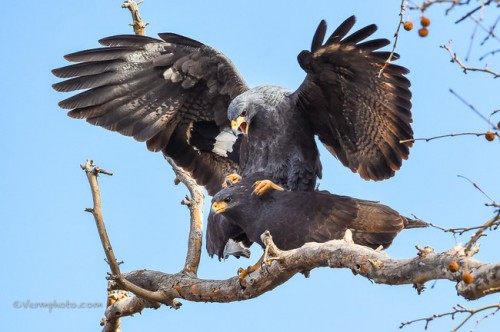



.gif)




